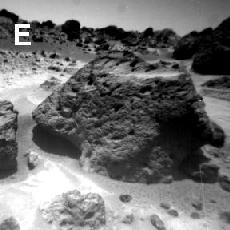This image shows the rock called "Souffle".
Click on image for full size
Image from: NASA/JPL
Martian Weathering by Wind and Sand
Sand is lifted and carried into the air by winds. The general process by which this occurs is called "saltation". Saltation becomes very powerful during the frequent Martian global dust storms. The rock shown here, called "Souffle", shows many pits and holes formed in the rock by sand erosion.
The ability of particles to erode rock depends upon how many particles are available, their size, and the angle of attack. On Mars, the winds can be faster than on Earth, so the winds can more easily lift and carry sand particles. This makes the erosion of Martian rock a little different than on Earth.
You might also be interested in:
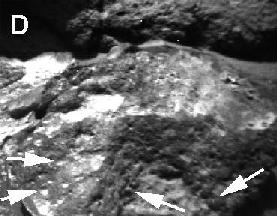
This image shows pits and holes in a small rock found by the Mars Pathfinder Rover. The Souffle rock also reveals a very pitted surface. These pits and holes are the result of sand caught up in the winds
...more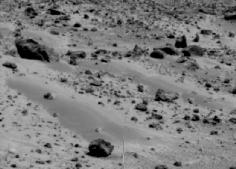
Sand grains on Earth are usually made of quartz. Sand grains of Mars seem to come from basalt. They seem to be particles which are cemented together, rather than round crystal fragments such as sand grains
...more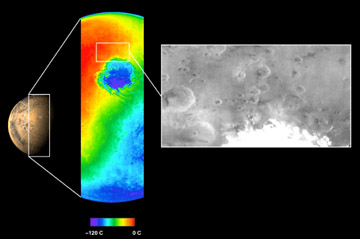
The Mars Odyssey was launched April 7, 2001. After a six-month journey, the Odyssey arrived at Mars on October 24, 2001. The instruments onboard the Mars Odyssey will study the minerals on the surface
...more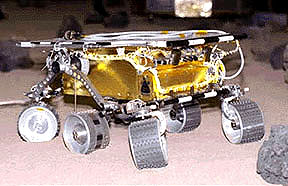
The Mars 2005 mission is still in the planning stages. It is set to launch in the year 2005.
...more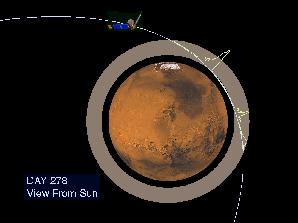
Aerobraking slowed the Mars Global Surveyor down when it reached Mars. Aerobraking also helped MGS to get into the right orbit for mapping the surface of Mars. Aerobraking means that the MGS flew through
...more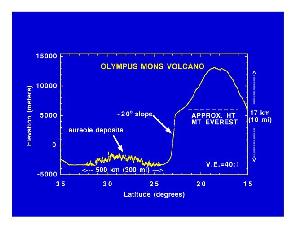
Mars Global Surveyor carries an instrument which measures the heights of things. This instrument is called an altimeter, or "altitude-meter". The graph to the left shows the results returned from Mars
...more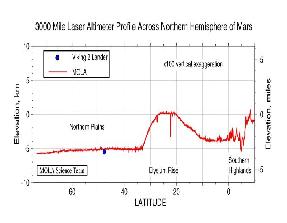
Mars Global Surveyor carries an instrument which measures the heights of things. The picture to the left shows Mars Global Surveyor's measurement of the size of the giant cliff which separates the southern
...more


